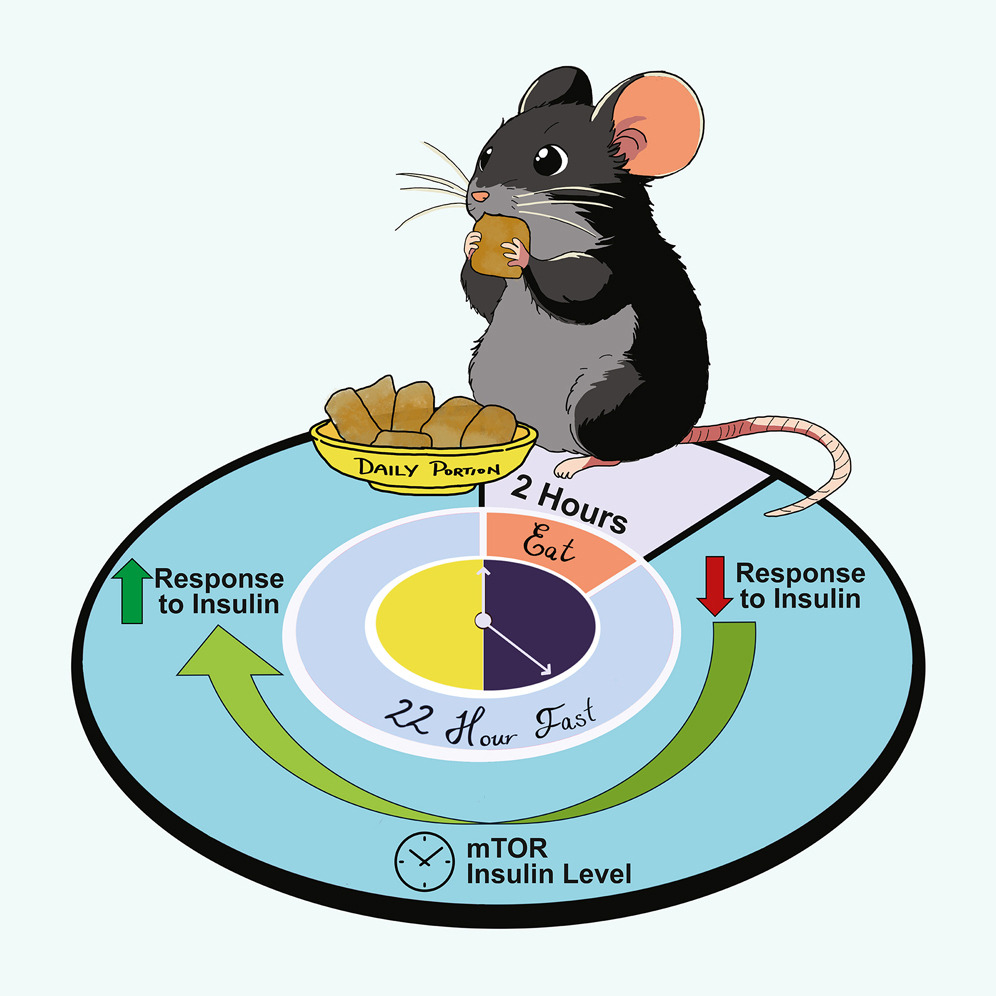Highlights
• The observed effects of calorie restriction (CR) depend upon when the mice last ate
• CR mice are insulin resistant relative to ad libitum mice when examined post-prandially
• CR does not suppress muscle and hepatic mTORC1 activity
• CR animals reprogram their metabolism to adapt to a daily fast
Summary
Calorie restriction (CR) extends lifespan and healthspan in diverse species. Comparing ad libitum- and CR-fed mice is challenging due to their significantly different feeding patterns, with CR-fed mice consuming their daily meal in 2 h and then subjecting themselves to a prolonged daily fast. Here, we examine how ad libitum- and CR-fed mice respond to tests performed at various times and fasting durations and find that the effects of CR—insulin sensitivity, circulating metabolite levels, and mechanistic target of rapamycin 1 (mTORC1) activity—result from the specific temporal conditions chosen, with CR-induced improvements in insulin sensitivity observed only after a prolonged fast, and the observed differences in mTORC1 activity between ad libitum- and CR-fed mice dependent upon both fasting duration and the specific tissue examined. Our results demonstrate that much of our understanding of the effects of CR are related to when, relative to feeding, we choose to examine the mice.
Graphical abstract
…/…
https://www.cell.com/cell-reports/fulltext/S2211-1247(24)01014-3
